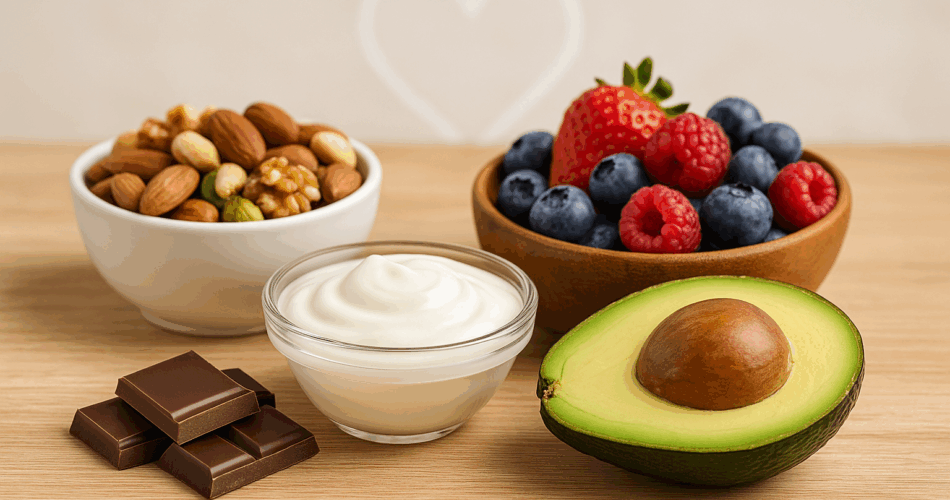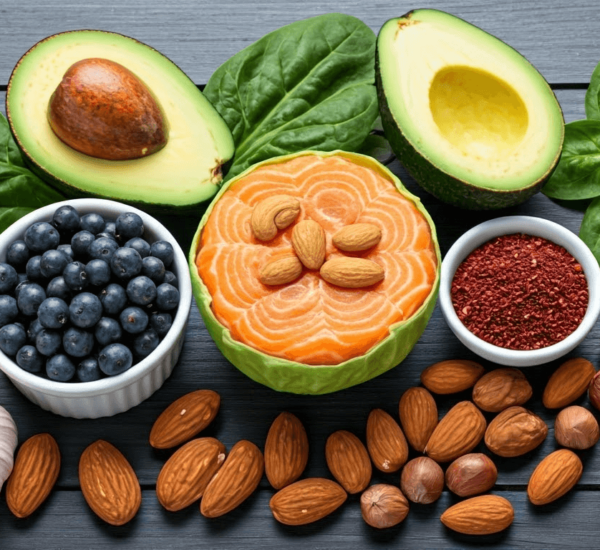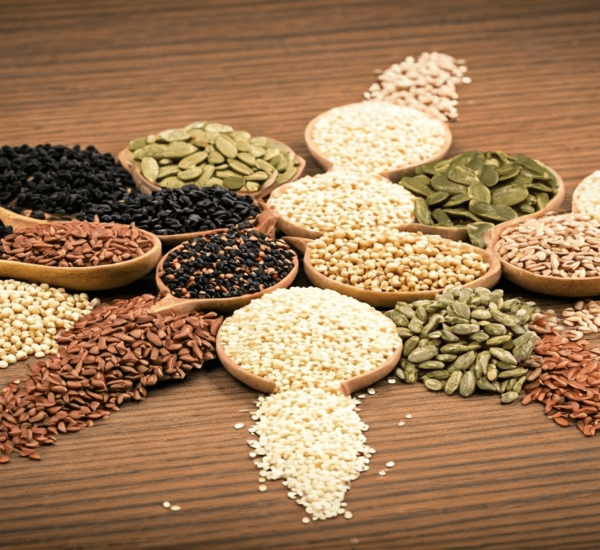Why Smart Snacking Matters for a Healthy Heart
Snacks are not small talk for the heart; they are strategic touchpoints that can shift daily nutrition from “good enough” to “genuinely protective.” In the Natural Remedies Dose approach, emphasis lands on whole, minimally processed foods that deliver fiber, healthy fats, and antioxidant compounds—exactly what the heart craves.
How Snacks Influence Blood Pressure, Lipids, and Inflammation
- Fiber binds cholesterol in the digestive tract, supporting healthier LDL levels.
- Unsaturated fats (mono- and polyunsaturated) improve lipid profiles compared with saturated fats.
- Polyphenols and antioxidants temper oxidative stress, supporting endothelial (blood vessel) function.
- Stable blood sugar helps limit the glycation and inflammation associated with cardiovascular risk.
Portion Control and Timing Basics
- Portion: think palm-sized for dense foods (nuts) and bowl-sized for low-calorie, high-volume options (popcorn, berries).
- Timing: snack during longer gaps between meals (e.g., 3–4 hours) to curb overeating and maintain steady energy.
- Structure: pair fiber + protein or fiber + healthy fats for steady fullness and smoother blood sugar.
Quick Tip: If a snack has a nutrition label longer than a short paragraph, it’s probably doing too much. Short ingredient lists usually mean fewer pitfalls.
Snack #1 — Mixed Nuts (Almonds, Walnuts, Pistachios)
Nuts are compact nutrition—healthy fats, plant sterols, magnesium, and fiber in a single handful. For heart health, walnuts stand out for ALA (a plant omega-3), while almonds and pistachios add vitamin E, potassium, and satisfying crunch.
Ideal Serving Size and How to Portion
- Target: ~30 g (¼ cup), or about a small palmful.
- Pre-portion into small containers or reusable snack bags to avoid “handful creep.”
Nutrient Highlights (MUFA/PUFA, Fiber, Minerals)
- Monounsaturated fats (almonds, pistachios): support healthier LDL/HDL patterns.
- Polyunsaturated fats (walnuts): ALA omega-3 supports vascular health.
- Magnesium & potassium: help support normal blood pressure.
- Fiber: supports cholesterol management and fullness.
Pros
- Bulletproof convenience; shelf-stable.
- Dense in heart-helpful fats, minerals, and fiber.
- Pairs easily with fruit for a balanced mini-meal.
Cons
- Calorie-dense—easy to overeat.
- Salted or candied varieties may raise sodium and sugar intake.
- Nut allergies are a non-starter.
Flavor upgrade: toss raw nuts with cinnamon + pinch of cacao powder for a dessert-like vibe without added sugar.
Snack #2 — Berry Bowl (Blueberries, Strawberries, Raspberries)
Berries are nature’s “small but mighty” antioxidant packages. Their anthocyanins give vibrant color and are linked with vascular support and oxidative stress balance.
Ideal Serving Size and Pairings
- Target: 1 cup mixed berries.
- Pair with a spoon of nut butter or a few walnuts for staying power.
Nutrient Highlights (Polyphenols, Vitamin C, Fiber)
- Anthocyanins & polyphenols: support endothelial function.
- Vitamin C: supports collagen in vessel walls.
- Fiber: supports healthy cholesterol and satiety with a low calorie load.
Pros
- Low in calories and high in nutrients.
- Naturally sweet; reduces desire for ultra-processed sweets.
- Versatile—fresh or frozen both work.
Cons
- Can be pricier out of season.
- Pre-sweetened mixes or syrups add unnecessary sugars.
- Perishable; requires smart storage.
Budget tip: buy frozen berries; they retain nutrients and blend perfectly into yogurt bowls or quick smoothies.
Snack #3 — Greek Yogurt with Chia or Flax
Greek yogurt brings high-quality protein to the snack game. Add chia or ground flax for fiber and ALA omega-3—a simple, two-ingredient build that checks every heart box.
Ideal Serving Size and Best Toppings
- Target: ¾–1 cup plain Greek yogurt (2% or low-fat) + 1 Tbsp chia or ground flax.
- Optional: ¼ cup berries for a light sweetness and extra polyphenols.
Nutrient Highlights (Protein, Calcium, Omega-3 ALA)
- Protein (15–20 g per cup): stabilizes blood sugar and curbs hunger.
- Calcium & potassium: support blood pressure regulation.
- ALA omega-3 from seeds: contributes to anti-inflammatory dietary patterns.
- Fermented dairy: may support a healthier cardiometabolic profile when unsweetened.
Pros
- High satiety per calorie; supports weight management.
- Customizable with spices (cinnamon, vanilla) and fruit.
- Good post-workout snack due to protein content.
Cons
- Flavored yogurts can be sugar bombs—always check labels.
- Not suitable for dairy intolerance unless using lactose-free or plant options.
- Some plant yogurts are low in protein; choose fortified, higher-protein varieties.
Label check: aim for ≤7–8 g sugar per serving for dairy yogurt; 0–3 g for plain is best.
Snack #4 — Hummus with Veggie Sticks & Whole-Grain Pita
Hummus—made from chickpeas, tahini, olive oil, lemon, and garlic—delivers fiber, plant protein, and heart-friendly fats. Pair with crispy vegetables and a small wedge of whole-grain pita to keep portions balanced.
Ideal Serving Size and Prep Tips
- Target: ¼ cup hummus + 1 cup raw veggies (carrots, cucumbers, bell peppers) + ½ small whole-grain pita.
- Prep containers of cut veggies once or twice weekly for grab-and-go ease.
Nutrient Highlights (Fiber, Plant Protein, Minerals)
- Fiber: supports healthy cholesterol and fullness.
- Plant protein: balances carbs and stabilizes energy.
- Olive oil & tahini: add heart-friendly unsaturated fats.
- Garlic & lemon: bright flavor without excess salt.
Pros
- Extremely satisfying; crunchy + creamy texture combo.
- High fiber to support cholesterol management.
- Easy to batch-prep for a week.
Cons
- Store-bought versions can be heavy on oils and sodium.
- Over-dipping with large pita portions adds calories quickly.
- Sesame allergies (tahini) for some individuals.
DIY shortcut: blend 1 can chickpeas + 1–2 Tbsp tahini + lemon + garlic + water until creamy. Add olive oil sparingly to control calories.
Snack #5 — Air-Popped Popcorn (Plain or Lightly Seasoned)
Popcorn is a whole grain with naturally occurring fiber and polyphenols—a volume-rich snack that feels indulgent but can be extremely light when air-popped.
Ideal Serving Size and Seasoning Swaps
- Target: ~3 cups popped (about ¼ cup kernels).
- Season with smoked paprika, nutritional yeast, or garlic powder instead of butter and heavy salt.
Nutrient Highlights (Whole-Grain Fiber, Polyphenols)
- Fiber: supports satiety and healthy cholesterol metabolism.
- Polyphenols: contribute antioxidant activity.
- Low energy density: a larger portion for fewer calories when air-popped.
Pros
- Big bowl, small calorie load—great for evening cravings.
- Budget-friendly; kernels store well.
- Naturally gluten-free.
Cons
- Movie-theater style adds butter and sodium quickly.
- Pre-packaged microwave bags may contain oils and flavorings.
- Overeating is easy; use a measured bowl.
Flavor idea: toss warm popcorn with nutritional yeast + pinch of sea salt for a cheesy effect, hold the cheese.
Smart Swaps & Quick Builds (10 Plug-and-Play Ideas)
- Almonds + Dried Tart Cherries (unsweetened) — sweet-tart balance with healthy fats.
- Walnuts + Orange Segments — citrus vitamin C + ALA fats.
- Greek Yogurt + Cinnamon + Blueberries — dessert-like without the sugar crash.
- Cottage Cheese (low-fat) + Pineapple — protein + vitamin C; choose no-sugar-added fruit.
- Hummus + Cherry Tomatoes + Cucumber Rounds — crunchy hydration + fiber.
- Apple Slices + Peanut Butter (1 Tbsp) — classic fiber + protein combo.
- Edamame (steamed, unsalted) — plant protein and fiber in a pod.
- Whole-Grain Crackers + Avocado Mash — MUFA-rich, sprinkle with chili flakes.
- Chia Pudding (unsweetened milk, chia, vanilla) — make once, enjoy for days.
- Air-Popped Popcorn + Smoked Paprika — savory note without extra calories.
Shopping, Storage, and Batch-Prep Blueprint
- Shopping list anchors: raw unsalted nuts, frozen berries, plain Greek yogurt, chia/flax, chickpeas or hummus, fresh vegetables, whole-grain pita, popcorn kernels.
- Storage:
- Nuts in airtight containers (cool, dark place or fridge for longer freshness).
- Berries: keep dry; wash just before eating; frozen berries reduce waste.
- Yogurt: keep sealed; use within a week of opening.
- Hummus: refrigerate and portion in 2–3 day batches.
- Popcorn kernels: airtight jar; pop small amounts as needed.
- Batch-prep rhythm:
- Sunday/Wednesday: chop vegetables; portion nuts; cook a batch of chickpeas or divide hummus.
- Daily 60-second prep: assemble yogurt + seeds; rinse berries; pop popcorn at night.
Prep mantra: “Make the healthy choice the easy choice.” If it’s prepped and visible, it gets eaten.
Common Pitfalls to Avoid (Hidden Sugars, Salts, Oils)
- Flavored yogurt cups: many contain more sugar than dessert. Choose plain and sweeten with berries or cinnamon.
- Candied or honey-roasted nuts: turn a heart-healthy snack into dessert. Stick to raw or dry-roasted, unsalted.
- Hummus with long ingredient lists: prioritize short, simple formulas; watch sodium per 2 Tbsp serving.
- Popcorn with butter substitutes and “cheese” powders: often ultra-processed; use nutritional yeast or spices.
- Giant portions: use small bowls, snack baggies, or measuring cups to keep calories aligned with goals.
Sample 7-Day Heart-Healthy Snack Plan
Portions can be adjusted for energy needs. Aim for one to two snacks daily depending on meal timing and activity level.
- Day 1: ¼ cup mixed nuts + 1 small apple
- Day 2: Greek yogurt (¾ cup) + 1 Tbsp chia + ½ cup blueberries
- Day 3: Hummus (¼ cup) + carrot & cucumber sticks + ½ whole-grain pita
- Day 4: Air-popped popcorn (~3 cups) + sprinkle nutritional yeast
- Day 5: Berry bowl (1 cup mixed) + walnuts (1 Tbsp)
- Day 6: Edamame (1 cup, unsalted)
- Day 7: Avocado mash on 2–3 whole-grain crackers + tomato slices
Pros and Cons Summary (All 5 Snacks)
Pros
- Emphasize fiber, unsaturated fats, and polyphenols—key for cholesterol and vascular support.
- Generally easy to assemble and portable.
- Encourage minimal processing and short ingredient lists.
- Support satiety and weight management when portioned sensibly.
Cons
- Calories can add up with nuts and dips if portions drift.
- Hidden sugars/sodium in flavored yogurts, premade hummus, and packaged popcorn.
- Allergies/intolerances (nuts, sesame, dairy) require substitutions.
- Fresh produce like berries can be cost-sensitive without seasonal or frozen options.
Frequently Asked Questions
Q1. Can dark chocolate be a heart-healthy snack?
A. In moderation, yes. Choose 70–85% cacao, limit to 15–30 g, and pair with berries or a few nuts. Avoid bars with added caramel or sugary fillings.
Q2. What’s the best budget-friendly swap for berries?
A. Frozen mixed berries or seasonal fruit (apples, oranges) are cost-effective. Frozen produce is typically picked ripe and retains nutrients well.
Q3. How often should these snacks appear each week?
A. Most can be enjoyed daily when portioned properly. Rotate options to cover diverse nutrients and keep taste buds engaged.
Q4. Any plant-based alternative to Greek yogurt for protein?
A. Look for unsweetened soy or pea-protein yogurts with ≥8–12 g protein per serving. Add chia or ground flax for ALA omega-3 and fiber.
Q5. Is popcorn okay if blood pressure is a concern?
A. Yes—air-popped and unsalted. Season with herbs/spices and avoid butter to keep sodium and saturated fat low.







